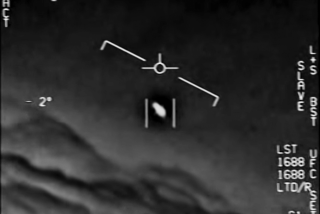Where Alien Life Might Make Online Contact
- Share via
Roswell.
Don’t worry, even though this column concerns the search for extraterrestrial life, you won’t find that desert spot mentioned here again.
If you are interested in that place, you can dive into any one of hundreds of UFO-themed sites, some of which make supermarket tabloids look in comparison like the Oxford Book of Knowledge.
We are instead going in search of something far rarer on this subject in the digital realm--true science. It exists, but for the most part on only one, rather sedate, site: https://www.seti-inst.edu.
This is the World Wide Web home of the SETI Institute, which is conducting a quiet, somewhat lonely search for traces of radio signals that may have been sent out from planets a long, long way from our home. Movie-goers were briefly exposed to its existence last year. In “Independence Day,” the young man who first detects a signal from unfriendly aliens is said to work for SETI (which stands for Search for Extraterrestrial Intelligence).
The real SETI Institute has roots back in 1959, when two Cornell physicists suggested that microwave radio transmissions could travel long distances in space. The next year, young radio astronomer Frank Drake conducted the first radio wave search for signals from other solar systems. He didn’t hear anything of much interest from his West Virginia outpost, but similar tests followed around the world, especially in what was then the Soviet Union.
NASA eventually got involved and, after years of planning, began the world’s most ambitious SETI project in 1992. Its program was supposed to last for a minimum of 10 years.
It ended in 1993. The search for little green men turned out to be an easy target for politicos looking for ways to cut government spending.
The institute was then born to continue the work, in a much diminished fashion, with support from private funding. The current budget is $3 million a year. Published reports have disclosed that major donors have included Microsoft co-founder Paul Allen, Hewlett-Packard co-founder William Hewlett and Intel co-founder Gordon Moore.
The SETI Institute site is somewhat unorganized (the home page promises it will be revamped this summer), but if you dig long enough, you can find fascinating documents. One is a “Declaration of Principles Concerning Activities Following the Detection of Extraterrestrial Intelligence.”
High on the list of these principles: The person who detects a suspected artificially produced radio pattern should promptly notify others in the field. That done, “a confirmed detection of extraterrestrial intelligence should be disseminated promptly, openly and widely through scientific channels and public media . . . “
It’s not clear what would happen next. Earth could aim a radio signal at the originating source, but even if it came from the nearest star, it would take four years to get there and another four to get a reply.
The institute examines about 2 billion radio frequencies for each target star on its list. The site can display nothing as titillating as blurry pictures of UFOs or film clips of surgery on crash-landed aliens.
But, “The faint whine that would betray an alien civilization,” notes the site, “could come tomorrow.”
*
Cyburbia’s e-mail address is david.colker@latimes.com.







